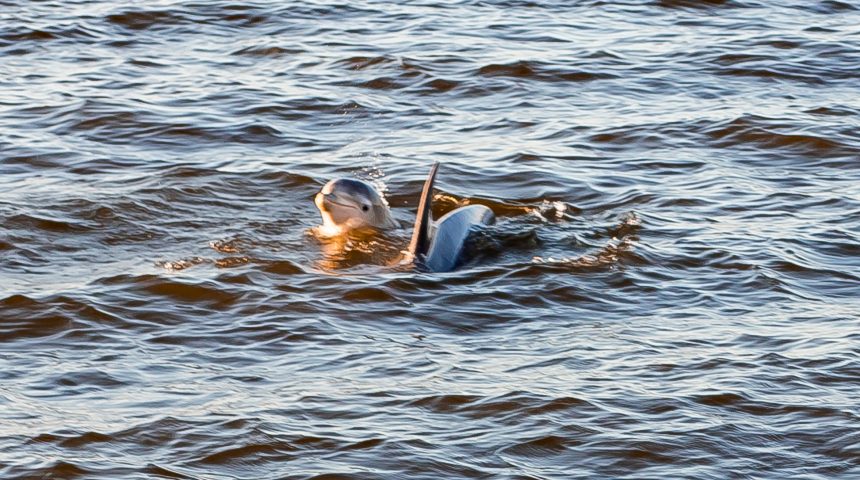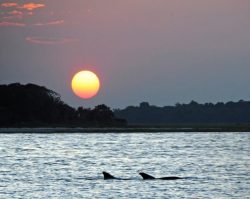
Learn with Us: The Atlantic Bottlenose Dolphin
June 22, 2020The Atlantic Bottlenose Dolphin lives in abundance around Amelia Island. You can commonly see their fins while gazing out from our beaches. The best way to see them, however, is on one of our cruises. On nearly every Amelia River Cruises trip the dolphins come to visit and show off around us. Come learn with us: The Atlantic Bottlenose Dolphin
Unfortunately, due to the pandemic, we aren’t running right now. So here are a few fun facts about dolphins and a lesson plan for any littles out there who are also stuck at home and want to learn more!
Bottlenose Dolphins
The dolphins most common in our area are the highly intelligent Atlantic bottlenose dolphins.
Communication
They communicate underwater and only underwater because, contrary to popular belief, they don’t have vocal cords. They use their blowholes to make whistle-like sounds while submerged.
Bottlenoses have many distinct sounds they make. Scientists seem to categorize them differently; however, there are two distinct sections.
- Pure tones:
- They Squawk. Some scientists label this noise separately which is why I broke out this group. This purpose of this sound isn’t exactly known, but it is only done while they are in groups – So, we can assume they are gossiping about the people on our cruises… 😉
- Whistles, Chirps, Screams, and the dolphins’ signature sound. All of these are forms of communication. Scientists are trying to categorize them; however, it seems that these noises change throughout the dolphin’s lifetime. This includes their signature sound (aka a sound that only that dolphin will make). It appears their language is constantly evolving!
- Bottlenoses also click. This sound isn’t for communication, but rather a sonar used to track each other, food, and to avoid predators. This we know for sure!
Relationships
The dolphin pods we typically see on Amelia River Cruises are inshore groups. Inshore groups are typically around 10 dolphins in size, with offshore groups upwards of 100. These groups are constantly changing. When a new offshore group goes by, dolphins switch out at will, constantly coming and going. This could, quite possibly be why their language is constantly in flux.
One thing that I have found to be the most interesting and, let’s face it, humorous is that there is a strong “Bro Code” among these dolphins. 😊 While they do not mate for life, two males born at approximately the same time will commonly form a lifelong attachment. They switch groups, hunt for food and are each other’s ultimate wing man when trying to impress the ladies. What a hoot!
Bottlenose infants form strong bonds with their mother and will stick with her herd for years after weaning. On the note of weaning… Fun fact: Florida Bottlenose Dolphins typically nurse for 18 months and are done by 20 months; but, Bottlenose Dolphins in the Indian Ocean can nurse for up to 8 YEARS. (just in case you don’t believe me, because I wouldn’t LOL. ) Talk about a patient Mama!
The Mysterious Pink (??) Dolphin
Anyway! Back to Amelia Island!!! Less than a month ago a PINK dolphin was spotted by red marker #4 by Pippi Longstockings’ house! This is EXTREMELY rare as pink dolphins are typically only reside in South America (with one exception being Pinky, a pink dolphin that lives off the coast of Louisiana). Typically, pink dolphins are commonly mislabeled and are actually Albino dolphins. While, Albinos are uncommon they are not nearly as rare as pink dolphins. Still, when questioned about the dolphins actual color, the individual reporting the Pink Dolphin said, “It was as pink as Pepto!”
Comment on Amelia River Cruises Facebook Page and lets us know your little ones favorite thing about the Atlantic Bottlenose Dolphin.
Tags: Amelia Island, Bottlenose Dolphins, the AtlanticCategorised in: Amelia Island, Wildlife & Marine Biology


